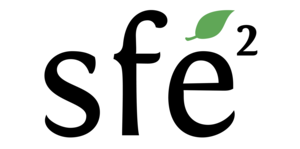Background: Life history trajectories are often ranked along a slow-fast continuum, with fast growing, maturing, and living individuals at one end, and individuals with opposite traits at the other. The organization and integration of multiple life history traits along this slow-fast continuum is thought to be constrained by life history trade-offs in response to environmental constraints and to be mediated by physiological mechanisms. One candidate mechanism is the insulin-like growth factor (IGF-1) that regulates the allocation of resources among traits in relation to nutrient availability, and consequently growth and ageing rates. The importance of environmental constraints, particularly early in life, such as food or heat stress, in shaping the circulating levels of IGF-1 and their influence in fine-tuning the growth and life history trajectory of organisms in the wild remains, however, little investigated.
Aim: The aim of this Master project is to investigate the close links between early growth environmental conditions, circulating levels of IGF-1, and growth and ageing rates in the long-lived Alpine swift.
Project details: This insectivorous bird feeds exclusively on its wing and faces food shortages on rainy days; it also breeds in cavities under the roofs of buildings and can suffer heat stress in warm days. Although weather conditions are well known to affect nestling growth, the links between IGF-1 and nestling growth have not been investigated, nor do we know about how IGF-1 levels vary at adulthood and how this variation relates to early growth conditions and explains changes in life history traits, such as age at first reproduction. You will perform lab work on plasma samples to determine IGF-1 concentrations in nestling and adult birds. This will be followed by statistical analysis to investigate the influence of weather conditions on variations in IFG-1, and in turn growth and life-history traits. If time allows it (i.e. project longer than 6 months), you will also participate to the field work to collect new data as part of the long-term monitoring of several Alpine swift colonies of Switzerland. Hence, this project is suitable for a 6 to 12 months Master project, with fieldwork being performed in June-July as part of a 12 months Master project.
This project is part of the PhD project of Cloé Hadjadji, who is working on the selection and heritability of mitochondrial traits in the Alpine swift. Cloé will supervise the laboratory work (and field work), and the statistics and writing will be jointly supervised by Cloé and Pierre Bize. The project (lab work) will take place at the Swiss Ornithological Institute in Sempach.
Requirements: We are looking for a student interested in physiology and ecology. The project involves lab work (IGF-1 analysis via ELISA), statistical analysis, and field work (in the attics of old buildings, from late May to early August) in multiple Swiss cities. We are looking for someone able to work with a team, as well as alone. Previous experience with lab work and R for statistics is desirable.
Contacts: cloe.hadjadji@vogelwarte.ch ; pierre.bize@vogelwarte.ch
Literature
Dantzer, B., and E.M. Swanson. 2012. Mediation of vertebrate life histories via insulin-like growth factor-1. Biological Reviews. 87:414-429. 10.1111/j.1469-185X.2011.00204.x
Lodjak, J., and S. Verhulst. 2020. Insulin-like growth factor 1 of wild vertebrates in a life-history context. Mol. Cell. Endocrinol. 518:110978. https://doi.org/10.1016/j.mce.2020.110978
Masoero, G., M.N. Dumas, J.G.A. Martin, and P. Bize. 2024. Trait-specific sensitive developmental windows: Wing growth best integrates weather conditions encountered throughout the development of nestling Alpine swifts. Ecology and Evolution. 14:e11491. https://doi.org/10.1002/ece3.11491

Commentaires récents